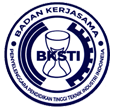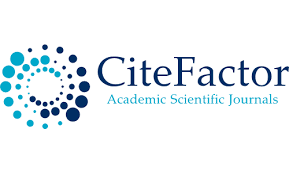Foraging Bee Optimization Algorithm
Abstract
Full Text:
PDFReferences
Abbass, H. A. (2001). MBO: Marriage in Honey Bees Optimization-A Haplometrosis Polygynous Swarming Approach. Proceedings of the 2001 IEEE Congress on Evolutionary Computation (IEEE Cat. No. 01TH8546) Vol. 1., 207-214.
Alizadehsani, R., Roshanzamir, M., Izadi, N. H., Gravina, R., Kabir, H. D., Nahavandi, D., . . . Fortino, G. (2023). Swarm Intelligence in Internet of Medical Things: A Review. Sensors, 23(3), 1466. doi:https://doi.org/10.3390/s2
Altshuler, Y. (2023). Recent Developments in the Theory and Applicability of Swarm Search. Entropy, 25(5).
Aslan, S., Karaboga, D., & Badem, H. (2020). A New Artificial Bee Colony Algorithm employing Intelligent Forager Forwarding Strategies. Applied Soft Computing, 96.
Belgrade, U. (2015, September 16). Bee Colony Optimization. Retrieved September 16, 2015, from http://www.sf.bg.ac.rs/index.php/en-GB/research-fields/814-bee-colony-optimization-bco
Bolaji, A. L., Khader, A. T., Al-Betar, M. A., & Awadallah, M. A. (2013). Artificial Bee Colony Algorithm, Its Variants and Applications. A Survey, Journal of Theoretical and Applied Information Technology, 47(2), 434-459.
Chen, X., Tianfield, H., & Du, W. (2021). Bee-foraging Learning Particle Swarm Optimization. Applied Soft Computing, 102. doi:10.1016/j.asoc.2021.107134
Cruz, D. P., Maia, R. D., & de Castro, L. N. (2021). A Framework for the Analysis and Synthesis of Swarm Intelligence Algorithms. Journal of Experimental & Theoretical Artificial Intelligence, 33, 659-681.
Curkovic, P., & Jerbic, B. (2007). Honey-bees optimization algorithm applied to path planning problem. International journal of simulation modelling, 6(3), 154-165.
Dorigo, M., Colorni, A., & Maniezzo, V. (1991). Positive feedback as a search strategy. Technical Report 91-016, Politecnico di Milano, Dipartimento di Elettronica, Milan, Italy.
Eberhart, R. C., Shi, Y., & Kennedy, J. (2001). Swarm intelligence. Elsevier.
Engelbrecht, A. P. (2007). Computational intelligence: an introduction (2nd ed.). Pretoria, South Africa: John Wiley & Sons.
Fakhermand, S. M., & Derakhshani, A. (2023). Design Optimization of Soil-Metal Composite Arch Bridges: Recent Swarm Intelligence Applications. Iranian Journal of Science and Technology, Transactions of Civil Engineering, 47(1), 373-387.
Gao, W., Liu, S., & Huang, L. (2012). A global best artificial bee colony algorithm for global optimization. Journal of Computational and Applied Mathematics, 236(11), 2741-2753.
Haddad, O. B., Afshar, A., & Mariño, M. A. (2006). Honey-Bees Mating Optimization (HBMO) Algorithm. A New Heuristic Approach for Water Resources Optimization. Water Resources Management, 20(5), 661-680.
Holland, J. H. (1975). Adaption in Natural and Artificial System. . MIT Press.
Janaki, M., & Geethalakshmi, S. N. (2022). A Review of Swarm Intelligence-Based Feature Selection Methods and Its Application. Soft Computing for Security Applications: Proceedings of ICSCS 2022, 435-447.
Karaboga, D. (2005). An Idea Based on Honey Bee Swarm for Numerical Optimization. Technical report-tr06, Erciyes University, engineering faculty, computer engineering department., Kayseri, Turkiye.
Kaswan, K. S., Dhatterwal, J. S., & Kumar, A. (2023). Swarm Intelligence: An Approach from Natural to Artificial. John Wiley & Sons.
Kennedy J. and Eberhart, R. (1995). Particle swarm optimization. Proceedings of the IEEE International Conference on Neural Networks, 4, pp. 1942–1948.
Krishnanand , K. N., & Ghose, D. (2005). Detection of multiple source locations using a glowworm metaphor with applications to collective robotics. in Proceedings of the IEEE Swarm Intelligence Symposium (SIS ’05), (pp. 84–94). Pasadena, California.
Kumar, A., Chatterjee, J. M., Payal, M., & Rathore, P. S. (2022). Revolutionizing the Internet of Things with Swarm Intelligence. System Assurances, 403-436. doi:10.1016/B978-0-323-90240-3.00023-0
Li, X., & Yang, G. (2016). Artificial bee colony algorithm with memory. Applied Soft Computing, 41, 362-372.
Mathlouthi , I., & Bouamama, S. (2016). A family of honey-bee optimization algorithms for Max-CSPs. International Journal of Knowledge-based and Intelligent Engineering Systems, 19(4), 215-224.
Pan, X. (2016). Genetic-bee Colony Dual-population Self-adaptive Hybrid Algorithm Based on Information Entropy. Scientific Bulletin of National Mining University, 1(1), 116.
Pham, D. T., Ghanbarzadeh, A., Koç, E., Otri, S., Rahim, S., & Zaidi, M. (2005). The Bees Algorithm – A Novel Tool for Complex Optimization Problem. In D. T. Pham, E. E. Eldukhri, & A. J. Soroka (Ed.), Intelligent Production Machines and Systems (p. 454). Elsevier Science Ltd.
Sato, T., & Hagiwara, M. (1997). Bee System: Finding Solution by a Concentrated Search. IEEE International Conference on Computational Cybernetics and Simulation (pp. 3954-395). Orlando, FL, USA: IEEE.
Schumann, A. (. (2020). Swarm Intelligence: From Social Bacteria to Humans. CRC Press.
Selvaraj, S., & Choi, E. (2020). Survey of swarm intelligence algorithms. 3rd International Conference on Software Engineering and Information Management, (pp. 69-73).
Shahzad, M. M., Saeed, Z., Akhtar, A., Munawar, H., Yousaf, M. H., Baloach, N. K., & F, H. (2023). A Review of Swarm Robotics in a NutShell. Drones, 7(4), 269.
Solgi, R., & Loáiciga, H. A. (2021). Bee-Inspired Metaheuristics for Global Optimization: A Performance Comparison. Artificial Intelligence Review, 54(7), 4967-4996. doi:10.1007/s10462-021-10015-1
Storn, R., & Price, K. V. (1997). Differential evolution—a simple and efficient heuristic for global optimization over continuous spaces. Journal of Global Optimization, 11(4), 341–359.
Teodorovic, D., & Dell’orco, M. (2005). Bee Colony Optimization—A Cooperative Learning Approach to Complex Transportation Problems. Proceedings of the 16th Mini-EURO Conference on Advanced OR and AI Methods in Transportation, (pp. 51-60). Poznan. Retrieved September 13-16, 2005
Tzanetos, A., & Dounias, G. (2020). A Comprehensive Survey on the Applications of Swarm Intelligence and Bio-Inspired Evolutionary Strategies. In G. Tsihrintzis, & L. Jain, Machine Learning Paradigms. Learning and Analytics in Intelligent Systems (Vol. 18, pp. 337-378). Cham: Springer. doi:https://doi.org/10.1007/978-3-030-49724-8_15
Yang, C., Chen, J., & Tu, X. (2007). Algorithm of Fast Marriage in Honey Bees Optimization and Convergence Analysis. In Proceedings of the IEEE International Conference on Automation and Logistics (pp. 1794–1799). Jinan, China: ICAL.
DOI: http://dx.doi.org/10.22441/ijiem.v4i2.20275
Refbacks
- There are currently no refbacks.

This work is licensed under a Creative Commons Attribution-NonCommercial 4.0 International License.
IJIEM - Indonesian Journal of Industrial Engineering & Management
Program Pascasarjana Magister Teknik Industri Universitas Mercu Buana
Kampus Menteng - Gedung Tedja Buana, Floor 4th
Jl. Menteng Raya No. 29 Jakarta Pusat- Indonesia
Tlp.: +62 21 31935454 Fax: +62 21 31934474
http://publikasi.mercubuana.ac.id/index.php/ijiem
Email: [email protected]

This work is licensed under a Creative Commons Attribution-NonCommercial 4.0 International License.
The journal is indexed by:





1.png)
.png)
.png)
.png)







